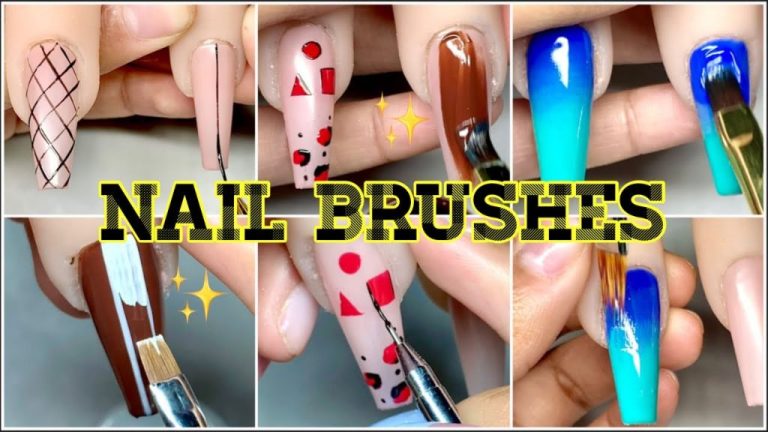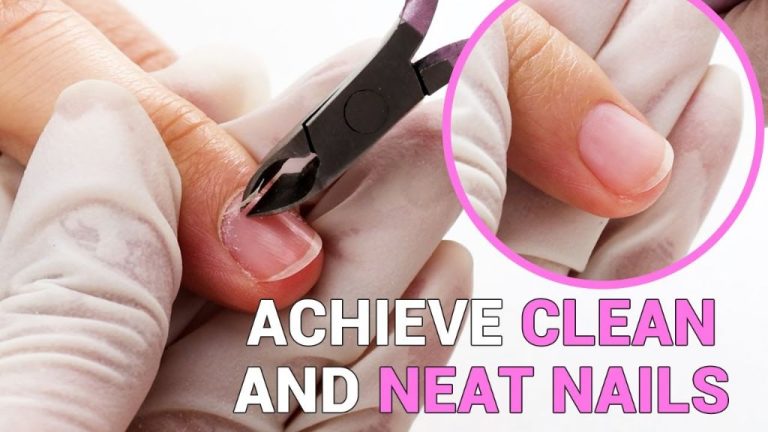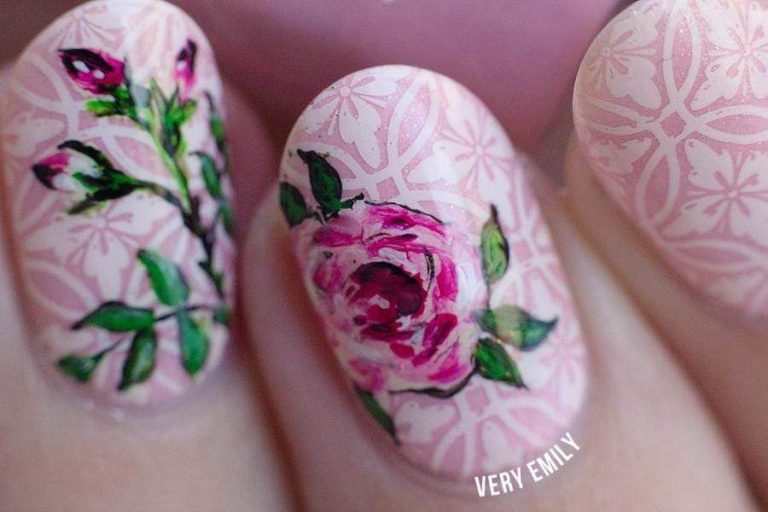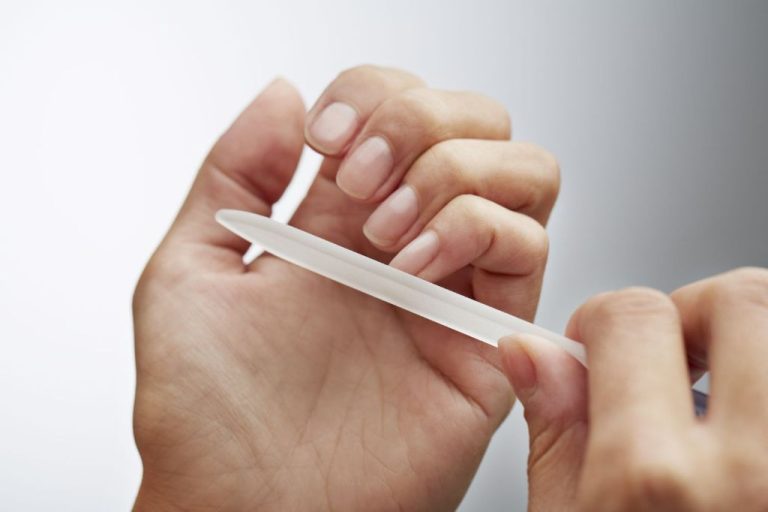Nail Tools 101: The Basics Of Manicure Essentials
A proper manicure requires having the right tools and products. Manicure essentials refer to the tools used to shape, buff, polish and care for the nails and cuticles. Having quality tools is important for achieving well-maintained, healthy looking nails.
This article will provide an overview of the basic tools needed for an at-home manicure, including nail clippers, files, nippers, cuticle care, base and top coats, nail polish removers, and polishes. The purpose is to inform readers about the key tools, their functions, and how to select quality options.
Knowing the basics of the top manicure tools and how to use them allows you to perform salon-quality nail care at home. Well-groomed hands can give you a polished, put-together look. Having the proper implements helps you safely and effectively trim, shape, moisturize and polish your nails.[1]
Nail Clippers
Nail clippers are an essential tool for proper nail care and maintenance. There are several types of nail clippers designed for different purposes:
- Straight nail clippers are the most common type. They have straight blades and are used for general nail trimming.
- Curved nail clippers have curved blades to follow the shape of fingernails. They provide more precision for fingernail trimming.
- Slanted nail clippers have angled blades to make it easier to see the nail while clipping. They are ideal for precise trimming.
- Toenail clippers have wider, heavier-duty blades designed specifically for thicker toenails.
- Fingernail clippers are smaller with sharper blades for trimming thinner fingernails.
- Large nail clippers work well for those with bigger hands or larger nails.
- Small nail clippers are better suited for those with smaller hands or nails.
Some nail clippers come with special features like an attached nail file, nail cleaner, or catch to capture clippings. When selecting nail clippers, consider size, comfort, and any helpful features based on your needs.
Proper nail clipping technique is important to avoid splits, cracks, or ingrown nails. Before clipping, soften nails by soaking in warm water. Trim nails straight across in one motion, avoiding rounding off corners or cutting too short into the quick. Curved clippers should follow the nail’s natural shape. Clippers designed for toenails can help avoid accidentally cutting the skin. Disinfect between uses. Proper nail clipper use prevents painful tears and preserves healthy nails.1
Nail Files and Buffers
Nail files come in a variety of materials and grit sizes for different uses. The most common types of nail files are:
- Metal – Avoid metal nail files as they can damage nails. The rigid surface is too harsh.
- Glass – Glass nail files are more gentle on nails than emery boards. They don’t dull easily and can be cleaned.
- Cardboard/Paper – Paper and cardboard nail files are very inexpensive but also disposable. They are more abrasive than glass.
- Emery boards – Classic emery boards are made of emery paper glued to a cardboard backing. They come in a range of grits.
Nail file grit refers to the coarseness of the file. Lower grit sizes like 80 or 100 are more abrasive for shaping nails. Higher grits like 180 or 240 are less coarse, better for general filing and smoothing edges.
Using nail files properly prevents weakening nails. Always file in one direction, avoiding back and forth sawing motions. Use finer grits to finish smoothing nails.
Nail buffers are gentle finishing blocks made of fine abrasives. They can refine nail shape and make nails shine. Buffers are used after filing to smooth and polish the nails.
When using a nail file, begin filing the edges of the nail using light, short, straight strokes in one direction, usually from the outside corner to the center. Avoid using a back-and-forth motion. For buffing blocks, very lightly sweep the surface over nails to smooth and shine them after filing.
Cuticle Nippers and Pushers
Proper cuticle care is important for maintaining healthy nails and preventing hangnails. The cuticle is the thin skin that surrounds and protects the nail bed. Keeping cuticles neat and tidy allows for a clean look and prevents debris from getting trapped underneath the nail, which can lead to infection.
There are two main tools used for cuticle care – cuticle nippers and cuticle pushers. Cuticle nippers are small scissors used to trim off excess or loose cuticle skin. It’s important to only trim the dead skin and avoid cutting into live skin, as this can be painful and lead to infection. Cuticle pushers are tools used to gently push back the cuticle from the nail plate. Pushing back rather than cutting living cuticle helps maintain a protective barrier for the nail bed.
When using cuticle nippers, carefully trim any loose, dry skin using small snipping motions. Avoid cutting too deep into the cuticle or nipping living skin. Only remove what is ready to be trimmed off. After nipping, use a cuticle pusher to gently push back remaining cuticle from the nail plate. Apply firm yet gentle pressure and avoid tearing at the cuticle. This helps shape and define the cuticle without damaging it.
Proper cuticle care technique helps prevent issues like hangnails while maintaining the cuticle’s protective role. Always sterilize tools before and after use to prevent infection. Use a light touch and never cut cuticles until they bleed, as this can lead to serious infection. With the right tools and technique, cuticle self-care can be easy and beneficial for both appearance and nail health.
Sources:
https://www.instyle.com/beauty/nails/cuticle-care
https://karanailedit.com/blogs/news/the-ultimate-guide-to-cuticle-care-dry-manicures
Nail Brushes
Nail brushes are an essential tool for proper nail hygiene and care. They are used to gently scrub the nail plate and remove debris, dirt, and bacteria that can build up, especially around the cuticles and underside of nails (source). Using a nail brush regularly helps keep nails clean and prevents potential infections.

Nail brushes come with either soft or firm bristles. Soft bristle brushes are ideal for sensitive skin and cuticles. They provide a gentle scrubbing action. Firm bristle brushes offer a deeper clean by removing stubborn dirt and grime (source). The bristles reach tight areas like under the free edge and around the cuticles.
It’s recommended to use a nail brush any time after washing hands or showering when the nails are soaked and debris is softened. Gently scrub each nail from base to tip, spending extra time under nails. Rinse afterwards. Using a nail brush helps nails stay clean and healthy.
Cuticle Oil
A key part of any proper manicure routine is cuticle oil, which helps hydrate and moisturize the thin skin around the nails known as the cuticles. Using cuticle oil regularly can help prevent painful hangnails, dry and cracked cuticles, as well as promote healthy nail growth.
Many nail experts recommend applying cuticle oil at least once daily, focusing on massaging it into the cuticles and nail beds. The oil seals in moisture and delivers nourishing ingredients like vitamins, botanical extracts, and essential fatty acids directly to the cuticles.
Some of the most hydrating oils for cuticles include jojoba, olive, coconut, and argan. Look for cuticle oils that contain these carrier oils as the base, along with ingredients like vitamin E, rosehip seed oil, and shea butter for added moisturizing benefits.
When applying cuticle oil, use the brush or applicator to distribute it along the cuticle area and under the nail tip. Gently massage it into the skin to boost absorption. Allow the oil to fully soak in before rinsing hands. Using cuticle oil as part of your manicure prep can make pushing back and trimming cuticles easier and less painful.
Regular use of cuticle oil will keep nails looking tidy and well-manicured. Pick an oil with a pleasant scent you enjoy using daily. Consistently hydrating cuticles prevents hangnails and irritation, promoting the healthy growth of both nails and cuticles.
Base and Top Coats
Base and top coats are essential products for achieving a flawless manicure. The base coat is applied first, before painting on color. The top coat goes on last to seal and protect the polish.
The main purpose of a base coat is to help the polish adhere to the nail and prevent staining. Base coats help smooth ridges and fill in imperfections on the nail surface so the color glides on evenly. They also contain ingredients to condition nails and prevent them from becoming dry and brittle. Some base coats are formulated to help polish last longer before chipping.
Base coat ingredients often include nitrocellulose to bind to the nail, adhesion promoters, and plasticizers. Application tips for base coat include using thin, even layers and allowing each layer to dry completely before adding another.
The top coat seals in color and provides a glossy shine. It helps prevent chips, dings, and smudges by creating a protective barrier over the polish underneath. Top coats contain ingredients like nitrocellulose, plasticizers, and polymers to form a durable, flexible film over the nails.
When applying a top coat, use thin strokes over the entire nail and wrap the tips to seal in color. Avoid over-brushing, which can cause bubbles or a bumpy texture. Allow each layer of top coat to dry fully before adding another for maximum protection and shine.
(source)
Nail Polish Remover
Nail polish remover is an essential tool for removing nail polish and cleaning up manicures. The active ingredient in most nail polish removers is acetone, a strong solvent that breaks down nail polish. There are two main types of nail polish remover:
Acetone-based removers are the most effective at breaking down tough nail polish quickly. However, frequent use can dry out the nails and skin. Non-acetone removers rely on weaker solvents like ethyl acetate and are less drying, but may require more scrubbing to remove dark polishes.
Nail polish remover is best applied using cotton balls or pads. Soak the cotton in remover and hold it on the nail for 5-10 seconds before gently rubbing off polish. Scrubbing too roughly can damage the nail. For glitter polishes, foil method may be needed. Wrap nails in remover-soaked cotton then aluminum foil to allow maximum soak time.[1]
Be sure to use remover in a well-ventilated area. Follow up with cuticle oil or moisturizer to counteract drying effects. With proper use, nail polish remover can safely and effectively remove manicures.
Polishes and Tools
There are many different types of nail polishes that can be used for nail art designs. Some popular options include:
- Regular nail polish – Available in every color imaginable, regular nail polish is a nail art staple.
- Glitter nail polish – Contains different sized glitter particles for a sparkly, eye-catching look.
- Matte nail polish – Dries to a flat, non-shiny finish.
- Chrome nail polish – Has a mirror-like metallic finish.
- Crackle nail polish – Dries with a cracked texture.
- Magnetic nail polish – Contains iron powder so it can be manipulated into designs using magnets.
There are also many nail art tools that can help create intricate designs:
- Dotting tools – Allow you to make uniform dots of various sizes.
- Striping tape – Tape that can be used to create straight lines, geometric patterns, or divided color sections.
- Rhinestones – Adhere flatback rhinestones or gems for sparkling accents.
- Stamping plates – Etched plates that allow you to pick up designs using polish and transfer them onto nails.
- Stencils – Reusable plastic templates with cutouts to create patterns.

With the right polishes and tools, you can let your creativity run wild and design salon-worthy nail art at home.
Sources:
https://barrym.com/products/essential-nail-art-tools
https://nailcompany.com/collections/nail-art-tools-1
Conclusion
Having the right tools is essential for proper at-home manicure techniques. As summarized in this article, the key tools include nail clippers, files, buffers, cuticle tools, brushes, base and top coats, polish removers, and polishes. Using these tools correctly allows you to maintain healthy nails and cuticles.
Proper techniques involve soaking nails first to soften them, gently pushing back cuticles without cutting them, filing nails to the desired shape, and applying base coat before polish. It’s also important to use polish remover safely and moisturize nails and cuticles after removing polish. With the right tools and techniques, you can give yourself a salon-quality manicure at home.
Beautiful, strong nails and cuticles come down to utilizing the proper manicure essentials and techniques. Treat your nails with care, and your hands will always be runway-ready.





